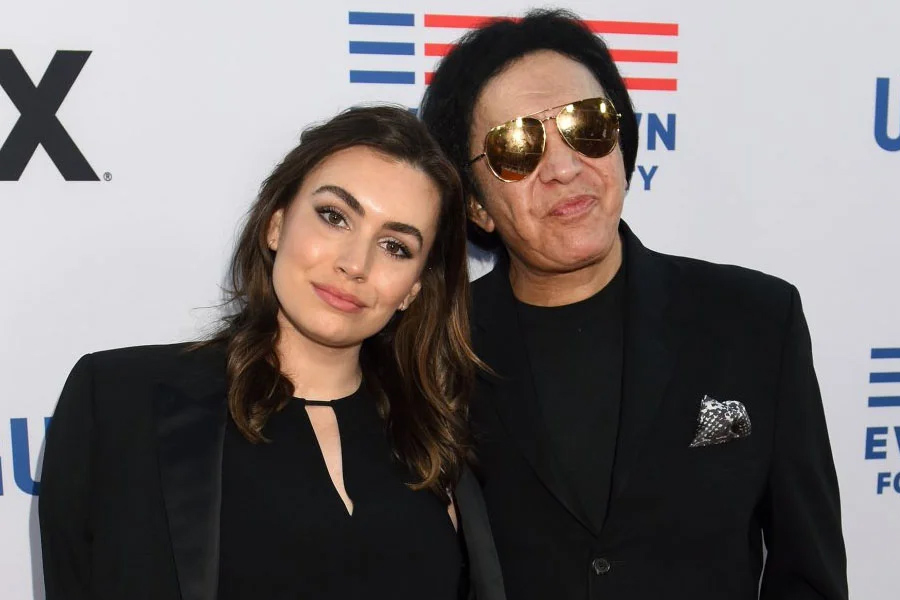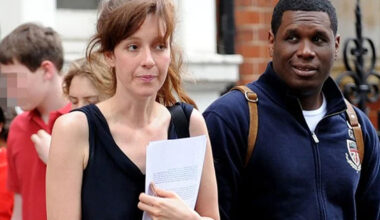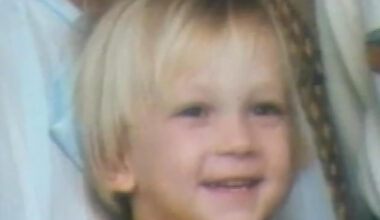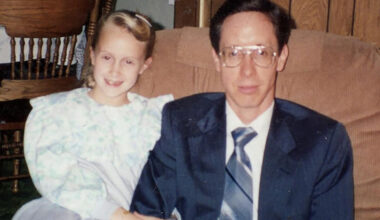Basic Information
| Field | Details |
|---|---|
| Full Name | Frederick Kears “Freddie” Beckmeier |
| Also Known As | Fred Beckmeier, Freddie Beckmeier |
| Profession | Bassist, songwriter, occasional actor; later furniture designer |
| Primary Genres | Rock, blues, funk, soul |
| Active Years | 1960s–1980s (music); post-1980s (design/crafts) |
| Notable Bands | Beckmeier Brothers; Full Moon; Soul Survivors; Paul Butterfield Blues Band |
| Spouse | Katey Sagal (married May 1, 1977; divorced 1981) |
| Children | None documented |
| Siblings | Steve (Stephen) Beckmeier, guitarist and bandmate |
| Education | Harborfields High School, New York (reported) |
| Birth | Mid-20th century (exact date unconfirmed) |
| Death | September 4, 2021, Los Angeles, California (reported; cancer) |
| Residence | United States; later life in Los Angeles |
| Known Instruments | Fender Precision Bass (often with flatwound strings) |
Early Life and Family
Freddie Beckmeier surfaced out of New York’s suburban corridors, where the hum of garage bands and high school stages often became lifelines to bigger dreams. Reportedly a graduate of Harborfields High School, his path pivoted early toward music, reflecting an upbringing where rhythm felt communal. His most consistent familial anchor—both personally and professionally—was his brother, Steve Beckmeier, a guitarist with whom he shared rehearsal rooms, vans, and eventually, a band name.
Together, the Beckmeier brothers founded the Beckmeier Brothers, a funk-rock outfit forged at the tail end of the 1970s. That partnership was more than brand and blood; it was a shared creative compass that pointed toward groove-heavy songs and tight ensemble playing. Beyond his sibling bond, Freddie’s most public relationship was his marriage to actress and singer Katey Sagal. They married on May 1, 1977, in the heat of Hollywood’s musical crosscurrents and parted in 1981. No children are linked to their union, and Freddie maintained a notably private profile after the divorce.
Career Highlights
Beckmeier’s musical footprint begins with the Soul Survivors, a seminal soul-rock outfit active through the late 1960s and early 1970s. In a decade often measured by chart peaks, Freddie’s contributions were more subterranean—recording sessions, live gigs, and bass lines that carried the pulse without demanding the spotlight. That sensibility would define his work in and around the Paul Butterfield Blues Band at the turn of the 1970s, where horn-driven blues collided with rock arrangements and improvisation. Accounts place him within the band’s live churn and studio flow in this era, aligning his tone with a lineage of Butterfield low-end anchors.
In 1972, Freddie’s profile rose through Full Moon, a fusion-minded project with heavyweights like Buzz Feiten (guitar), Neil Larsen (keyboards), Gene Dinwiddie (sax/flute), and Phillip Wilson (drums). Their self-titled album delivered a sophisticated blend of jazz textures, rock urgency, and soul atmosphere—cuts like “Midnight Pass” and “Take This Winter Out of My Mind” shimmered with ensemble interplay and supple bass foundations. It’s the kind of record that becomes a cult classic: adored by musicians, passed between crate-diggers, never quite mainstream but always discovered anew.
By 1979, the Beckmeier Brothers released a self-titled LP, driven by funk energy and radio-friendly hooks. “Rock and Roll Dancin’” reached across borders and languages, covered internationally and folded into the eclectic DNA of late-70s crossover music. Session dates dotted his schedule—reports connect Freddie to Gregg Allman sessions and soul singer Randy Brown—while later hip-hop producers sampled grooves from the era, a quiet testament to bass lines built for lasting resonance.
Freddie’s sound favored feel over flash. He leaned toward a Fender Precision Bass, often strung with flatwounds, laying down lines described as “conga-like” for their percussive bounce and steady warmth. He could be heard—really heard—when the band left him space, yet he never crowded; it’s the sonic humility that separates a bassist from a bass player.
Acting and Craft Design
In 1979, Beckmeier appeared in the film The Rose, a Bette Midler-led drama that captured the frenzy and fragility of rock stardom. His on-screen moment wasn’t a pivot so much as a cameo—proof of how deeply he moved within the music community of the era.
After the torrid run of studios and stages, Freddie took a surprising turn into artisanal craft. Through Beckmeier Design, he built furniture and art from reclaimed wood and found materials—“dumpster wood,” as he reportedly joked. The pieces were tactile, sustainable, and unpretentious, much like the bass lines that drew listeners in without theatrics. His late career embodied reinvention: a craftsman’s patience replacing the tempo of stage life, creation now measured in grain and joinery rather than bars and measures.
Later Years and Passing
Details of Beckmeier’s final decade are sparse, and that’s fitting for a man who avoided the megaphone even when proximate to it. The portrait that emerges is one of deliberate quiet—occasional music reunions, craft work, and the kinds of friendships that don’t need press releases. Reports indicate he died of cancer on September 4, 2021, in Los Angeles. Tributes from musicians and niche fans echoed across social media and community pages, each recalling a line, a night, a session—evidence that legacies can be intimate and still immeasurable.
Timeline
| Year(s) | Event |
|---|---|
| Mid-1940s–1950s | Born; grew up in New York (exact date unconfirmed). |
| 1960s | Early bass gigs; activity with Soul Survivors. |
| Late 1960s–early 1970s | Work around the Paul Butterfield Blues Band; live and studio involvement. |
| 1972 | Full Moon releases self-titled album; fusion-rock acclaim among musicians. |
| 1977 | Marries Katey Sagal (May 1). |
| 1979 | Beckmeier Brothers release self-titled LP; appears in The Rose. |
| 1981 | Divorces Katey Sagal. |
| 1980s | Ongoing session work; soul and rock dates; grooves later sampled. |
| Post-1980s | Transitions to Beckmeier Design; furniture/art from reclaimed materials. |
| 2002 | New Full Moon-related release reconnects the musical circle. |
| 2010s | Low public profile; occasional retrospectives and fan discussions online. |
| 2021 | Passes away on September 4 in Los Angeles (reported). |
Selected Credits
| Project | Role | Notable Work | Year(s) |
|---|---|---|---|
| Soul Survivors | Bassist | Live sets; studio sides | 1960s–1970s |
| Paul Butterfield Blues Band | Bassist | Late-60s/early-70s live/studio presence | circa 1969–1972 |
| Full Moon | Bassist/Vocals | Full Moon (self-titled) | 1972 |
| Beckmeier Brothers | Co-founder/Bassist | Beckmeier Brothers (self-titled); “Rock and Roll Dancin’” | 1979 |
| Session Work | Bassist | Dates with Gregg Allman; Randy Brown | 1970s–1980s |
| The Rose (film) | Performer/bit part | Feature appearance | 1979 |
| Beckmeier Design | Founder/Designer | Reclaimed-wood furniture and art | Post-1980s |
Family and Relationships
Freddie’s closest professional collaborator was his brother, Steve (Stephen) Beckmeier, whose guitar anchored the Beckmeier Brothers and other joint ventures. Their synergy—tight, tasteful, anchored in groove—was the family’s public calling card. In his personal life, his marriage to Katey Sagal linked him to Hollywood’s concentric circles of music and television. They wed on May 1, 1977, and divorced in 1981, with no children together. Other relatives and relationships rarely surfaced publicly, underscoring a preference for privacy even as his work threaded through notable bands.
FAQ
Who was Freddie Beckmeier?
An American bassist and songwriter active from the 1960s through the 1980s, known for soulful groove work and understated presence.
What bands is he most associated with?
The Beckmeier Brothers, Full Moon, Soul Survivors, and work around the Paul Butterfield Blues Band.
When did he marry Katey Sagal?
May 1, 1977; they divorced in 1981.
Did Freddie Beckmeier have children?
No children are documented from his marriage or later life.
What is notable about his bass style?
A warm, percussive feel on a Fender Precision Bass—often with flatwounds—prioritizing pocket and pulse.
Did he appear in any films?
Yes, he appeared in the 1979 feature The Rose.
What did he do after leaving music?
He founded Beckmeier Design and created furniture and art from reclaimed materials.
When and where did he pass away?
Reports indicate he died on September 4, 2021, in Los Angeles.
Where was he educated?
He is reported to have attended Harborfields High School in New York.
What was his net worth?
No reliable figure is publicly documented; he lived a modest, craft-focused life in later years.



